Naloxone Effectiveness Calculator
Community Overdose Impact Calculator
Estimate the potential lives saved by distributing naloxone in your community based on overdose statistics.
Estimated Impact
How This Calculator Works
Based on research from the CDC, each 10 grams of naloxone distributed in a community is associated with one fewer overdose death. This calculator estimates the potential lives saved based on:
- Total annual overdoses in your community
- Percentage of overdoses that could be prevented with naloxone access
For example, if your community experiences 100 overdoses annually and 30% of them could be prevented with proper naloxone access, we estimate approximately 30 lives saved per year.
Key Takeaways
- Naloxone can reverse an opioid overdose within minutes, buying critical time for medical care.
- Widespread community access reduces death rates and supports long‑term recovery.
- Compared with other opioid antagonists, naloxone’s rapid onset and easy administration make it the frontline tool.
- Effective programs pair naloxone distribution with education, stigma reduction, and linkage to treatment.
- Policies that fund and protect naloxone access are proven to save lives and lower overall healthcare costs.
When an opioid overdose strikes, every second counts. Naloxone is a medication that rapidly displaces opioids from the brain’s receptors, restoring normal breathing and consciousness. Its importance goes far beyond a single rescue; it’s a cornerstone of a broader strategy to curb the opioid crisis that has claimed over 500,000 lives in the United States since 1999 and is spreading globally.
What Is Naloxone?
Naloxone is an opioid antagonist approved by the FDA in 1971. Chemically, it’s a pure antagonist at the mu‑opioid receptor, meaning it binds without activating the receptor and pushes any opioid molecules away. The result is an almost instantaneous reversal of respiratory depression, the primary cause of death in an overdose.
The drug is available as an injectable solution, an auto‑injector (e.g.,Evzio), and a nasal spray (e.g.,Narcan). The nasal spray, introduced in 2015, has become the most common community‑based format because anyone can administer it without medical training.
How Does It Work?
The pharmacology is straightforward: naloxone competes with opioids such as heroin, fentanyl, or prescription painkillers for the mu‑opioid receptor. When it wins, the receptor’s activity drops, oxygen flow resumes, and the victim can begin breathing again. Its onset is typically 1-2minutes for the nasal spray and 3-5minutes for intramuscular injection. The effect lasts about 30-90minutes, which is often shorter than the half‑life of potent synthetic opioids like fentanyl; multiple doses may be needed.
This rapid action creates a crucial window for emergency medical services (EMS) to arrive, perform advanced care, and transport the patient to a hospital.
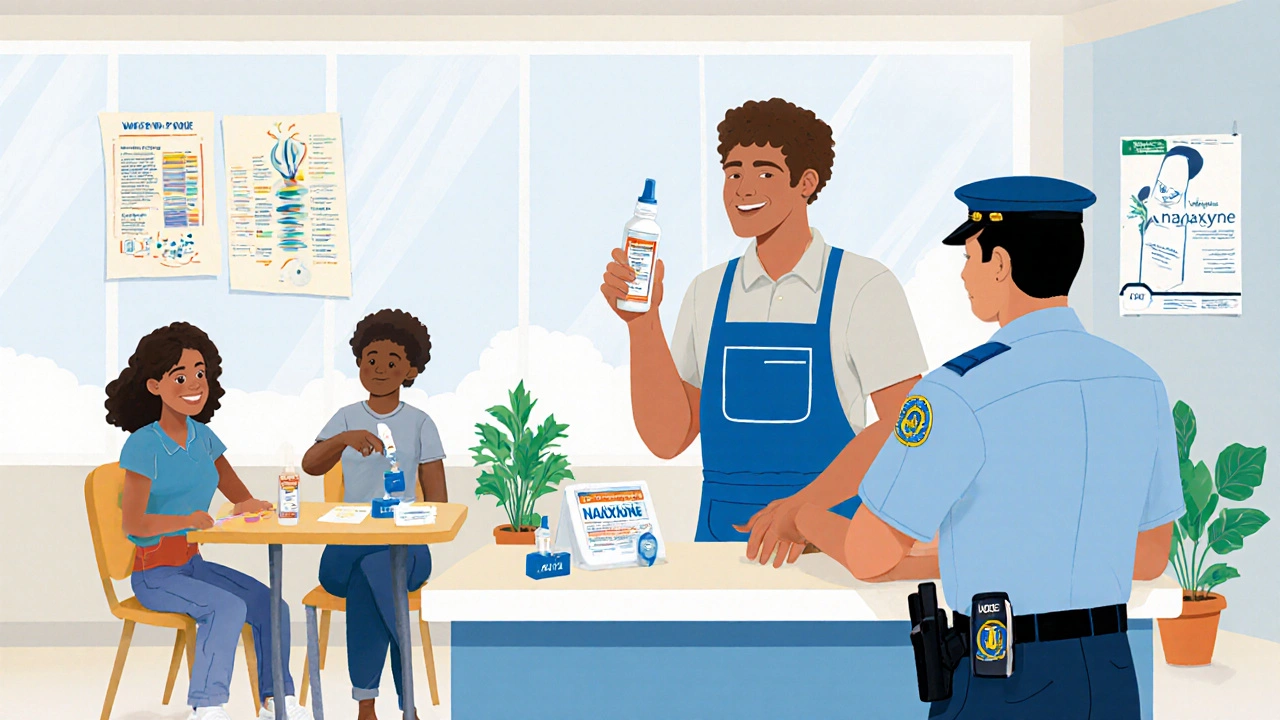
Why Naloxone Matters in Combating Opioid Addiction
1. Saving Lives - Studies from the CDC show that every 10grams of naloxone distributed in a community is associated with one fewer overdose death. In cities like Boston and San Francisco, community‑wide naloxone programs have cut fatal overdoses by 30‑40%.
2. Connecting to Treatment - The moment of reversal is an opportunity to engage the person in conversation about treatment. Programs that pair naloxone kits with referrals to medication‑assisted treatment (MAT) see a 25% increase in patients entering buprenorphine or methadone programs.
3. Reducing Stigma - Making naloxone accessible in pharmacies, schools, and shelters normalises the idea that overdose is a medical emergency, not a moral failing. This shift encourages people who use opioids to seek help earlier.
4. Economic Impact - The Heroin Crisis Cost Project estimates that each overdose death costs the US economy about $1.2million in lost productivity and medical expenses. Widespread naloxone access can dramatically lower these hidden costs.
Community Distribution Models
Effective distribution hinges on three pillars: availability, education, and linkage.
- Pharmacy Take‑Home Kits - In the UK, the NHS now allows pharmacists to dispense naloxone without a prescription. Similar models in US states like New York and California have reached over 200,000 individuals since 2020.
- Peer‑Led Programs - Organizations such as the Harm Reduction Coalition train people who use drugs to administer naloxone to peers. Peer distribution improves trust and ensures kits reach high‑risk networks.
- First‑Responder Carry - Many EMS agencies equip every ambulance with multiple doses of naloxone. Some police departments now carry nasal sprays, reducing response times in rural areas.
All three models benefit from a simple education component: a one‑page card describing when to give naloxone, how to administer it, and the importance of calling 999 (or 911) immediately after.
Comparing Naloxone With Other Opioid Antagonists
| Attribute | Naloxone | Naltrexone | Nalmefene |
|---|---|---|---|
| Primary Use | Acute overdose reversal | Maintenance therapy for alcohol & opioid dependence | Harm‑reduction for relapse prevention |
| Onset (nasal/IM) | 1-2min (nasal) | 30-60min (oral) | 15-30min (oral) |
| Duration | 30-90min | 24-72h | 12-24h |
| Route | Intranasal, IM, auto‑injector | Oral tablet, depot injection | Oral tablet |
| Prescription Status (US) | Over‑the‑counter in many states | Prescription only | Prescription only |
While naltrexone and nalmefene are valuable for long‑term treatment, they lack the rapid onset required to rescue someone breathing. That’s why naloxone remains the first‑line emergency tool.
Integrating Naloxone Into a Larger Treatment Pathway
Providing a kit is only the first step. To turn a saved life into a sustained recovery, programs should:
- Offer immediate counseling or a warm hand‑off to a MAT provider.
- Track kit distribution through a prescription drug monitoring program (PDMP) to identify repeat overdoses.
- Coordinate with local shelters, needle‑exchange sites, and community health centers for follow‑up appointments.
Data from a 2023 pilot in Manchester showed that when naloxone distribution was paired with a guaranteed MAT slot, 18% of beneficiaries entered treatment within 30days, compared with 5% in a control group.
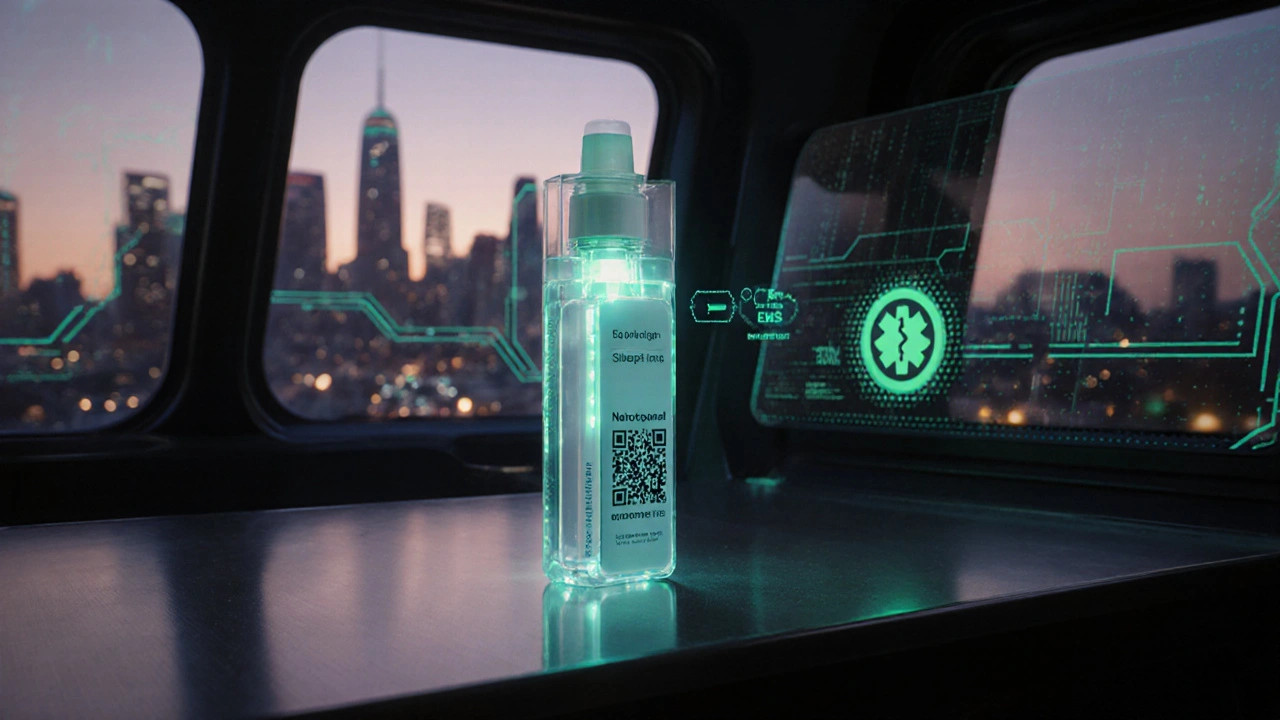
Common Myths and the Facts Behind Them
- Myth: Naloxone enables people to use more opioids.
Fact: Multiple randomized trials have found no increase in drug use after naloxone access; instead, users report feeling safer seeking help. - Myth: Giving naloxone can cause severe withdrawal.
Fact: While withdrawal symptoms can be uncomfortable, they are usually short‑lived and far less dangerous than death. - Myth: Only medical professionals can administer it.
Fact: The nasal spray is designed for layperson use; training takes less than five minutes.
Policy Landscape and What You Can Do
Legislation plays a pivotal role. In the UK, the Overdose Prevention Act 2022 mandates that all pharmacies stock naloxone and allows community groups to request bulk supplies. In the US, the 2023 National Naloxone Access Act provides federal grants to fund distribution in high‑risk counties.
If you’re a stakeholder, consider these actions:
- Advocate for insurance coverage of over‑the‑counter naloxone.
- Support legislation that provides liability protection for by‑standers who administer naloxone.
- Partner with local schools or workplaces to host free training sessions.
Looking Ahead: Innovations on the Horizon
Researchers are testing longer‑acting nasal sprays that could last up to 12hours, reducing the need for repeat dosing. Digital “smart” kits equipped with QR codes can alert EMS when a dose is used, speeding up professional response.
These advances reinforce a simple truth: naloxone saves lives now, and ongoing innovation will make it even more effective.
Frequently Asked Questions
Can I buy naloxone without a prescription?
In many US states and throughout the UK, naloxone is available over‑the‑counter at pharmacies. Some regions still require a prescription, so check local regulations.
How many doses should I keep in a kit?
A standard kit includes two nasal sprays. For high‑risk individuals-especially those using fentanyl-a third dose is recommended.
Will naloxone work on synthetic opioids like fentanyl?
Yes, naloxone binds to the same receptors. However, because fentanyl acts quickly and may linger, multiple doses are often needed.
Is there any risk of allergic reaction to naloxone?
Allergic reactions are extremely rare. The benefits of reversing a life‑threatening overdose far outweigh the minimal risk.
How does naloxone fit into long‑term recovery?
Naloxone is a lifesaver, not a cure. After an overdose reversal, connecting the person to medication‑assisted treatment, counseling, and social support is essential for sustained recovery.


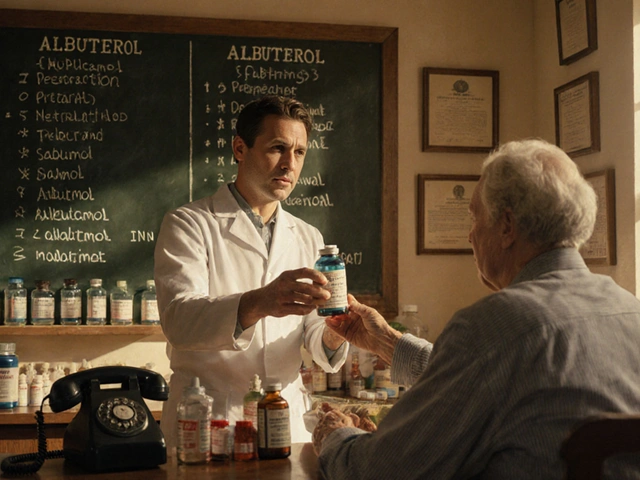
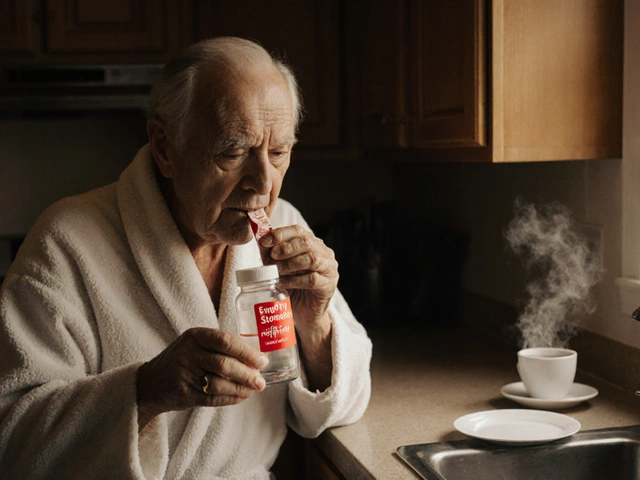
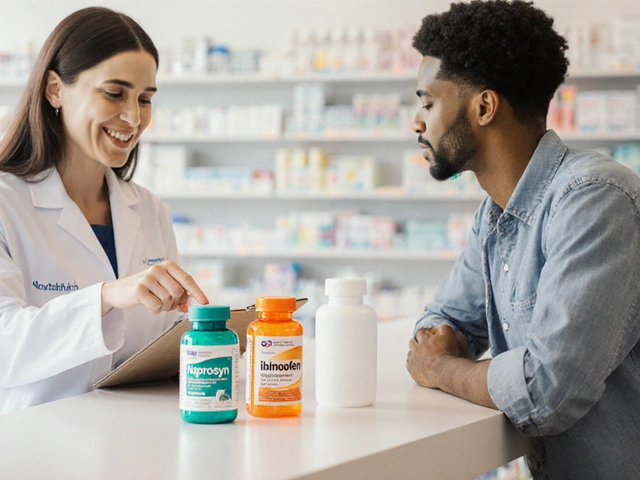
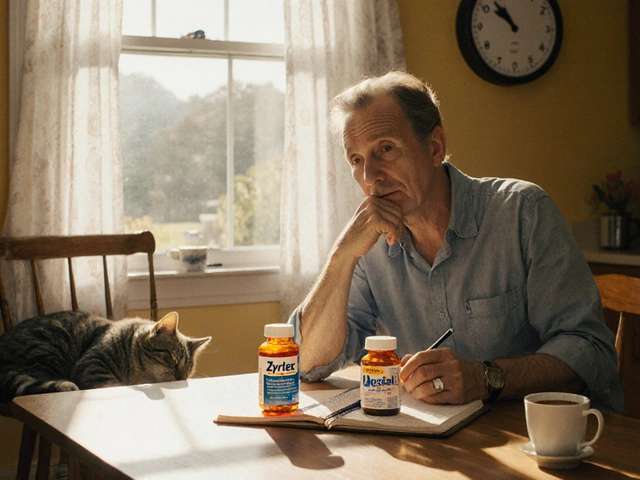
Comments
Snehal Suhane
8/Oct/2025Oh, because the world clearly needed another glorified first‑aid kit, right?
Let’s all pretend that naloxone alone will miraculously erase opioid addiction while the elite sip lattes and ignore systemic rot.
In reality, distribution without education is just a band‑aid on a hemorrhaging system.
Definately, a holistic approach is required.
So, if you think a few kits will fix everything, you’re definitely not thinking beyond the headline.
Ernie Rogers
8/Oct/2025We have the best resources in America and if we just pump more naloxone into our streets the opioid crisis will melt away it’s simple math for a great nation
Eunice Suess
8/Oct/2025It’s utterly heartbreaking to watch lives slip away while we debate paperwork instead of handing out lifesaving antidotes.
Every missed dose is a story that could have been rewritten if naloxone were as common as band‑aids.
We must cut the red tape and let compassion lead the charge.
Definately we need action now.
Anoop Choradia
8/Oct/2025One must consider the possibility that pharmaceutical conglomerates deliberately restrict naloxone availability to protect profit margins, a notion supported by the opaque pricing structures and lobbying expenditures disclosed in recent congressional reports. The data suggests an orchestrated effort to maintain dependence on opioid prescriptions, thereby ensuring a continuous market for antagonistic interventions only when absolutely necessary. Consequently, a transparent, community‑driven distribution model is not merely beneficial but essential to counteract these entrenched interests.
bhavani pitta
8/Oct/2025While the efficacy of naloxone is undisputed, the emphasis on distribution alone may overlook the root causes of addiction, such as socioeconomic disparity and mental health neglect. It would be prudent to allocate resources toward preventative education and rehabilitation services concurrently, lest we treat only the symptoms and not the disease.
Brenda Taylor
8/Oct/2025We have a moral duty to ensure every community has access to naloxone 🙂 it’s not just a medical tool but a statement that we value human life over bureaucratic inertia
virginia sancho
8/Oct/2025Totally agree with you – the sooner we get kits into the hands of volunteers the more lives we’ll save. Sorry for the typos I’m typing fast but the message is clear – act now!
Even small outreach programs can make a huge difference when they’re supported by local organizations.
Namit Kumar
8/Oct/2025Exactly! If we combine widespread naloxone access with robust community education 😊 the impact multiplies dramatically – it’s a win‑win for public health.
Sam Rail
8/Oct/2025Nice post.
Taryn Thompson
8/Oct/2025Indeed, the urgency cannot be overstated. However, while we push for rapid deployment, we must also safeguard against misuse by ensuring proper training. Let’s strike a balance between speed and responsibility.
Lisa Lower
8/Oct/2025Everyone here seems to get the point that naloxone saves lives and that’s fantastic but let’s dive a bit deeper into how we can make the most of this tool together.
First we need to map out the hotspots in every city and allocate resources where the overdose rates are highest.
Second we should partner with local NGOs and faith‑based groups who already have trust in the community.
Third provide free training sessions that are simple to understand and repeat them regularly.
Fourth create a mobile app that alerts volunteers when a dose is needed in real time.
Fifth we must lobby for legislation that protects Good Samaritans from legal repercussions so they feel safe stepping in.
Sixth ensure that the kits are stocked with clear instructions and extra naloxone syringes for repeat doses.
Seventh, we should collect data after each use to refine our distribution strategies and prove effectiveness to funders.
Eighth, celebrate every life saved publicly to raise awareness and encourage more participation.
Ninth, incorporate mental health resources alongside the kits so that overdose survivors can get follow‑up care.
Tenth, involve former addicts in the outreach because they have the most authentic voice.
Eleventh, secure sustainable funding through grants and community donations rather than relying on short‑term charity.
Twelfth, use social media campaigns that are relatable and share real stories of recovery.
Thirteenth, train school counselors to recognize early signs of opioid misuse and distribute school‑based kits.
Fourteenth, collaborate with pharmacies to make naloxone a standing order product.
Fifteenth, keep the conversation alive with regular community meetings that address concerns and successes.
All of these steps together can transform naloxone from a reactive antidote into a proactive public health cornerstone.
Dana Sellers
8/Oct/2025Wow this is a lot but honestly if we don’t start now we’re just being lazy and ignoring people who need help 😒 we need to act and stop making excuses.
Damon Farnham
8/Oct/2025Indeed, your frustration is noted; however, excessive emotive outbursts, while understandable, may detract from the nuanced policy discussions that are essential-especially when addressing a crisis of this magnitude, where every stakeholder’s perspective must be weighed carefully, and where data-driven solutions should supersede mere emotional rhetoric.
Gary Tynes
8/Oct/2025Great ideas! i think the mobile app and school outreach are especially cool – lets keep the momentum going.
Marsha Saminathan
8/Oct/2025While I admire the sarcasm, let’s not forget that behind every statistic is a human story, a family shattered, a future altered-so painting the issue with a snarky brush does a disservice to those battling addiction, and perhaps a more compassionate narrative would inspire broader community involvement, especially when we combine vivid storytelling with actionable steps, because colors of hope can spark change in ways that cold data never will.